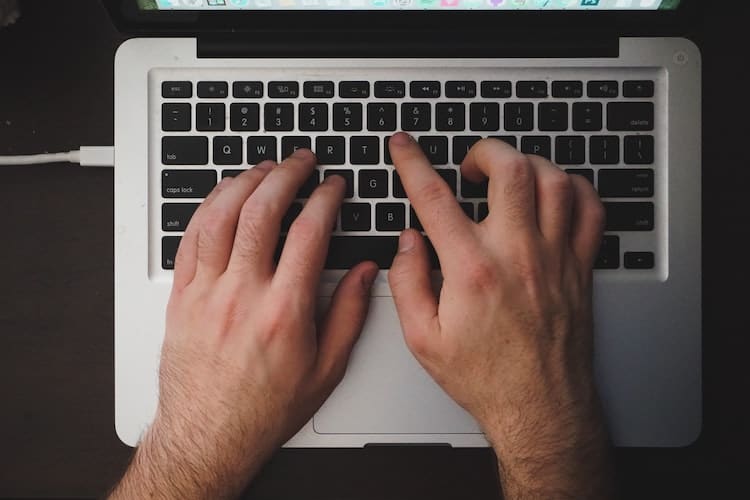
We are all guilty of using our laptops while they charge. Most times, we just don’t care because we always have something to do and can’t wait for our laptops to charge fully before using them. But really, is it okay to use a laptop while it is charging?
Using a laptop while it is plugged in is completely acceptable because the batteries of laptops are built to adapt to constant charging.
Even though charging a laptop while using it is a common practice, constant charging could affect the battery capacity.
Why Is It Okay to Use a Laptop While Charging?
The stress your laptop’s battery goes through is minimal. This is because most of the time your laptop is plugged in, its battery is not charging. Even when it is, it is not powering your laptop.
When your laptop is charging, your battery isn’t the component receiving the power, at least not always. Your laptop is powered by the A/C adapter connected to the charger. The lithium-ion battery was built in a way that stops it from charging when it is full.
How Do Lithium-Ion Batteries Work?
Due to its lithium-ion battery, once your laptop gets to 100%, it stops charging even when plugged in. The battery only begins charging when it drops to about 95%. When it gets to 100%, it stops charging once again. This cycle continues for as long as your laptop is charging. Since it is not being used, your battery could take hours to lose that 5%.
The fear that always leaving your laptop plugged in diminishes the battery’s integrity is not new. This was a problem before the invention of lithium-ion batteries in 2005. Back then, once you plugged in your laptop, the battery would keep charging even when it got to 100%.
For those who own laptops with removable batteries, experts suggest that you can remove the battery once it is full. Be careful because if your laptop somehow loses power, it will turn off, which means you may lose the data you were working on. Your laptop abruptly powering off like that also runs the risk of damaging your laptop’s motherboard.
Removing your battery prevents it from overheating. A lithium-ion battery works best between 62 to 72 degrees. If it gets to 95 degrees or above, chances are your laptop’s battery is may get damaged.
On the bright side, simply charging your laptop and using it at the same time won’t cause it to overheat. Overheating occurs when the tasks being carried on your laptop are heavy or when numerous tasks are running at the same time.
Can a Laptop Handle Heavy Usage and Charging at the Same Time?
Leaving your laptop unplugged while using it for tasks like video games or heavy editing will cause its battery to deplete at a rapid rate. This fast depletion will cause you to charge more often. The frequent charging and discharging of your laptop will cause its battery capacity to deteriorate exponentially.
Laptops are built to handle heavy usage for extended periods of time without weakening. However, with heavy usage comes heavy drainage meaning your laptop’s battery will not last. This is why it is actually advisable that you perform heavy-duty tasks and charge at the same time.
There is a drawback to heavily tasking your laptop while charging it at the same time. Due to the several activities going on simultaneously, your laptop is bound to overheat. This temperature rise creates an environment that will negatively affect its battery.
Despite the drawback of overheating your laptop, it is advisable to take on that risk. It is a better option than having to charge at frequent intervals. Besides, with proper ventilation, you should be able to keep your laptop’s temperature at a moderate level.
Another thing you should note is, laptops are set to increase in performance when plugged in.
When on battery, they are set to reduce performance by lowering the processor power, dimming the screen, and cutting down the overall power usage. These are all done to make the battery last longer.
Therefore, your games and applications are likely to run better and faster on a laptop that is plugged in.
Although, you can fix this disparity in performance by manually changing the setting related to power consumption. But, remember that a high-performing laptop running on its battery will diminish quicker.
On the other hand, if you are performing simple tasks like browsing the internet or watching a movie, you can leave your laptop unplugged until the appropriate charging time. Yes, there’s a right time to charge your laptop.
What Is the Proper Way to Charge a Laptop?
Every battery has a charging and discharging cycle that needs to be followed. Following this cycle improves the time it takes before the battery reduces in charge capacity.
Overall, plugging in your laptop all the time is not the best charging practice. Of course, always leaving your laptop plugged in won’t affect its battery, but you run the risk of overheating your laptop from time to time.
One thing you should know is, letting your laptop discharge to zero drastically degrades its battery’s life.
According to battery experts, the perfect charge range for a laptop is between 40 to 80%. The best charging practice would be to let your battery drain to 40% and then charge it to 80%. Repeating this practice leads to several years of long-lasting battery performance.
If you frequently let your laptop’s battery drain and then fill it up to 100%, you will only get about 350-500 discharge cycles before it starts losing capacity. However, with proper charging, you can get up to 4700 discharge cycles before your battery capacity starts to lessen.
There are some brands that have software that helps you keep track of your battery levels. For example, Lenovo has laptops that come with a Vantage app. This app lets you set the minimum and maximum battery levels of your laptop.
Unfortunately, most brands don’t offer any software that controls battery levels. Without software to do this, monitoring your battery level is tedious work, and most people can’t keep up.
How to Prolong Battery Life
No matter how well you follow the guidelines for charging a laptop the right way, its battery capacity will drop with time.
However, there are things you can do to make the most out of your battery’s current capacity.
- Try to limit the number of apps running in the background. While you may not be using them, your laptop is powering them.
On your Windows laptop, you should be able to find the task manager within settings. This manager shows you all the processes currently running on your laptop. You can choose to close all non-essential processes and applications.
- Look out for the temperature of your laptop. Always try to keep the temperature at an average level. You can do this by using your laptop on a hard, flat surface and not a soft one. Also, make sure to keep the air vents open, so your laptop doesn’t overheat.
- You can go to settings on your laptop and adjust the power setting to preserve the battery. Most laptops come with a power-saving mode which you can take advantage of.
- If you aren’t using features like Bluetooth or WI-FI, then turn on airplane mode.
- Deter from charging other devices using your laptop. Not only will charging your device with your laptop drain its battery, but it could also damage your device’s.
As you can see, these options are easier to apply than having to monitor your battery level all the time.
